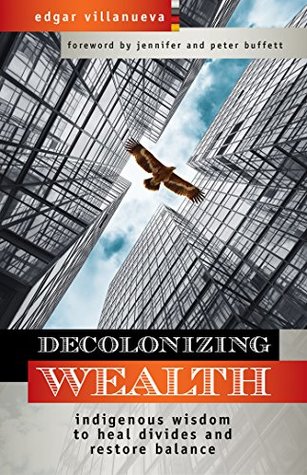More on this book
Community
Kindle Notes & Highlights
“This is not our money. This wealth was created on the backs of Native people, whose role was never compensated and never acknowledged.
This wealth was made on the backs of enslaved Africans. This wealth was made with stolen resources on stolen land with slave labor or low-wage labor. This wealth was stolen again when it was shielded from taxation, which would have generated revenue to pay for community improvements and programs. We acknowledge that, and we apologize. We’re sorry.”
often exert control by framing the conversation and asking only certain kinds of questions. That already places limits on what’s possible, what can or cannot be said, not to mention the predominance of advice given by funders, which shuts down conversation automatically. There is rarely space for an honest dialogue about what’s really going on, the challenges being faced, because everyone’s putting on a happy, successful face for the one holding the purse strings.
what if philanthropy asked a community what it is most proud of and how it could support that?
“generative listening,” in which we enter almost a meditative flow state, which enables us “to connect to the highest future possibility that can emerge.”
“How can everyone be powerful?” rather than “How can everyone have equal power?”
what if funders no longer assumed that disadvantaged communities and individuals needed to be empowered at all? What if we acknowledged how powerful they inherently are?
The irony of a project of empowerment is that it requires victims: if you need someone to give up power and make space for you, then you are a victim of the power dynamic.
“Get close to the things that matter, get close to the places where there is inequality and suffering, get close to the spaces where people feel oppressed, burdened, and abused. See what it does to your capacity to make a difference, see what it does to you.”2
“invited to comment and vote on the 100 groups that they think should receive funding.” The peer-review process promotes movement building in that it enhances critical analysis, connections, solidarity, and accountability between applicants.
at least half of the people who make the decisions about where money goes—at least 50 percent of staff, 50 percent of advisors, 50 percent of board members—should have intimate, authentic knowledge of the issues and communities involved.
there needs to be total transparency around where our assets are invested and those assets must be 100 percent mission-aligned, meaning not just do-no-harm but invested in decolonization, in order to heal divides and restore balance.
Decolonizing wealth is, at its essence, about closing the racial wealth gap. Poverty is the product of public policy and theft, facilitated by white supremacy.
we’re not just talking about making up for the crimes of the past, for the near genocide of Native Americans 500 to 200 years ago when the settlers first arrived and spread over the land, or for the slave trade and slavery. We’re talking about layers and layers of trauma caused by white supremacist exploitation. We’re talking about Jim Crow. We’re talking about the exclusions built into the New Deal that disadvantaged people of color by not counting certain professions worthy of benefits (such as farmworkers and domestic workers). We’re talking about white boarding schools that ripped Native
...more
This highlight has been truncated due to consecutive passage length restrictions.
10 percent tithed from each foundation in existence—and establish a trust fund to which Native Americans and African Americans could apply for grants for various asset-building projects, such as home ownership, further education, or startup funds for businesses.
that money is spent, no reporting. No strings attached.
We could also take a chunk of that money and buy land for Natives: land to which we actually have full property rights.
(Reservations are held “in trust” by the federal government. The economist Hernando de Soto has called it “dead capital” because we can’t put it to use by selling it, buying more to take advantage of economies of scale, or borrowing against it.10)
We expect certain kinds of people to make sacrifices. Apparently we reserve the term altruism for the privileged, fortunate, entitled people for whom self-sacrifice is a stretch, is unexpected.
Reciprocity is based on our fundamental interconnection—there is no Other, no Us vs. Them, no Haves vs. Have Nots. Reciprocity is the sense that I’m going to give to you because I know you would do the same for me. No one is just a giver or just a taker; we’re all both at some point in our lives.
No one is just a giver or just a taker; we’re all both at some point in our lives. This
, “Reciprocity is a matter of keeping the gift in motion through self-perpetuating cycles of giving and receiving. . . . Through reciprocity the gift is replenished. All of our flourishing is mutual.”
Indigenous peoples are a living reminder. We’re not gone, no matter how many times they tried to make us invisible. We’re here as a living reminder. That’s what we can be to all institutions, if we’re allowed to be.
Every person wants to be acknowledged and affirmed for who and what they are, a human being of infinite worth, someone with a place in the world.


